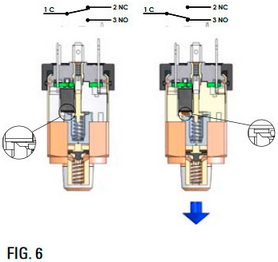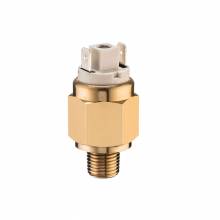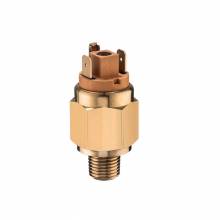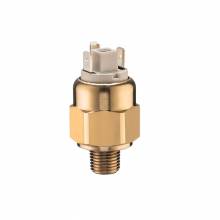VACUUM SWITCH
Brake switches
Pressure switches
Pressure switches SPDT
Vacuum switch
Differential clogging indicator
Pressure Transducers



- In the NORMALLY OPEN (NO) version (Fig. 4), the contact is open, i.e. there is no flow of current in the absence of pressure. When the pressure setting is reached, the electrical contact closes.
- The picture in Fig. 5 shows a pressure switch with NORMALLY CLOSED (NC) contacts in the absence of pressure. We can see that, in the absence of pressure, contacts are closed and the signal is present on the external contacts. When the pressure setting is reached, the electrical contact rises and interrupts the signal.
- In the SWITCHING CONTACT (SPDT) version (Fig. 6), the pressure of the fluid on the separating element (diaphragm or piston) causes a microswitch to switch over. Either NC or NO contacts, or both, can be used in this version.
 35-35V 35-35V |
 37-37V 37-37V |
|
| Vacuum switch ≤ 48V |
Vacuum switch ≤ 250V | Vacuum switch ≤ 48V |
 377-377V 377-377V |
 387 387 |
|
| Vacuum switch ≤ 250V | Vacuum switch with switching contacts (SPDT) |
 Pressure
Pressure
 Temperature
Temperature Level
Level Flow
Flow 357-357V
357-357V